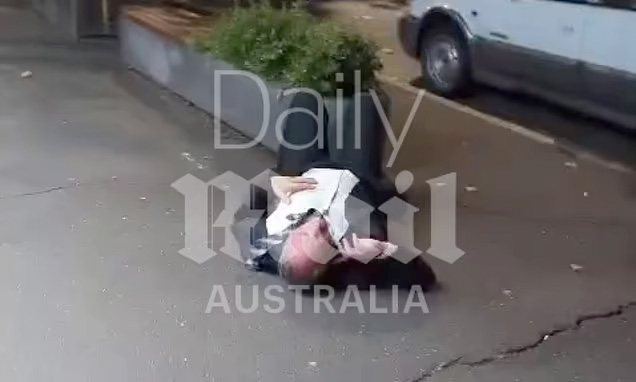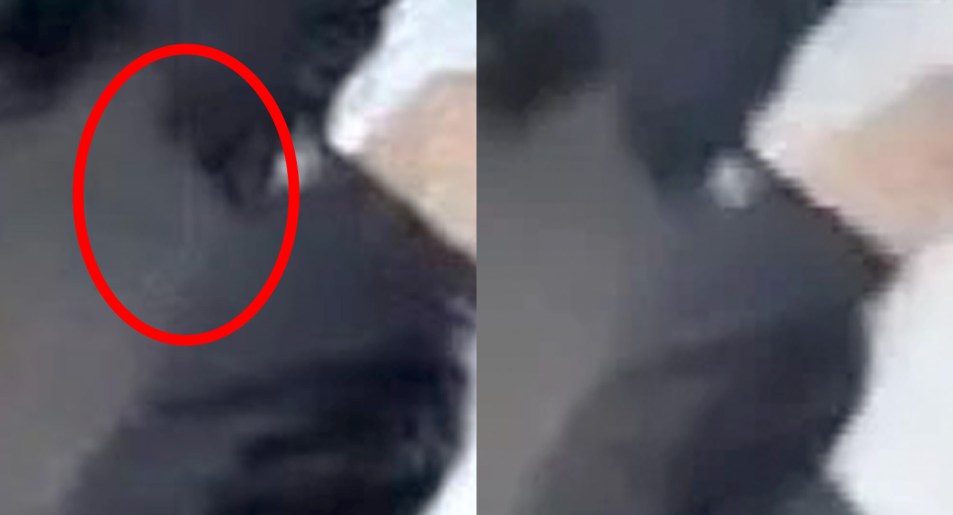
Major Australian news outlets appear to have unknowingly published AI-manipulated images of Barnaby Joyce, raising questions about how prepared newsrooms are for the technology widespread’s use.
Earlier this month, Daily Mail Australia was the first to publish footage of former deputy prime minister Barnaby Joyce lying on his back on a footpath in Canberra. The video was widely reported upon by Australian media, prompting a news cycle and an avalanche of social media commentary and memes about the Nationals politician.
Despite the Daily Mail Australia’s footage being heavily watermarked, many of these articles and posts used a “clean” image that didn’t have the publication’s logo.

It appears that the source for this image was a social media user who used an AI-powered tool to remove the watermark. Blair, who didn’t give his full name for professional reasons, told Crikey that he altered the image using WatermarkRemover.io, a website that says it can remove watermarks using “powerful AI technology with only [a] few clicks”, and manually cleared up some artefacts with Photoshop afterwards. He then posted it to X, formerly Twitter, where it subsequently spread.
Blair provided his original tweet as well as images from throughout the process to Crikey to show its provenance.

A Google reverse image search shows that this version of the image (complete with distinctive remaining visual artefacts) has been published on webpages including Nine’s 2GB, 9NEWS, News Corp Australia’s The Australian, news.com.au and The Daily Telegraph as well as on satirical websites The Chaser and The Shovel.
The Chaser’s Charles Firth confirmed that the site had used an image shared from social media and had no idea it had been manipulated.
“I presume the original, un-AI’d version depicts Barnaby soberly standing up and sipping a glass of sparkling mineral water, does it?” he said in an email.
None of the other publications responded by deadline.
Other than the removal of the watermark, Blair’s Joyce image appears to be identical to the watermarked version. However, as demonstrated by Nine’s manipulation of Victorian state MP Georgie Purcell’s body, even small changes introduced using AI technology can alter the meaning of an image.
RMIT Senior Lecturer Dr TJ Thomson, who is researching the use of AI-generated images, said that the widespread use of the image by newsrooms was worrying as it could seed doubt in the minds of its audience over the trustworthiness of the publications.
“It makes them ask what else has been done to the image. If a few pixels have been edited here and here, what’s to stop them changing other pixels to change the meaning,” Thomson said in a phone call with Crikey.
While the edits were not made by the newsrooms themselves, he believes newsrooms will need to make big changes to their processes to adapt to AI-generated images.
“At the end of the day, these aren’t technological issues. They’re about people. We’re messy, we lie, we have to account for that,” he said.
Watermarks have a purpose beyond just commercial reasons, Thomson said.
“Think of it in a different context like a Margaret Olley painting with her signature at the bottom. People would be confused if someone edited out her signature. These establish provenance.”








Hmmm. Can’t help but think that if The Chaser was manipulating the image, poor Barnaby would have been having intimacies with the nearest dog.
Why is this ‘AI manipulated ‘ and not just plain manipulated. Removing an electronic watermark doesn’t require intelligence artificial or otherwise. It just requires a program, and they’ve been around for decades.
In this instance it was both. But when I hear AI manipulation I imagine wholesale changes and not just the removal of a watermark.
Hey Patrick! Good question. The removal of a watermark doesn’t /require/ AI but in this case it did involve it.
The reason why that matters is because handing over this process to automation means that there may be other changes too. To put it bluntly, the pixels of Barnaby that are included in the AI-manipulated image do not necessarily reflect reality. In this situation, it didn’t make a difference but, as we saw in the Georgie Purcell story, sometimes it does.
Why I thought this was newsworthy is because it shows how AI-edited images are being published by outlets without declaration, whether knowingly or not. Since we use news outlets as reputable sources, it matters that it seems like they either don’t know enough or don’t care to tell their readers.
I’m sorry we need to stop blaming or even talking about “AI”.
For as long as there is a human editor and human is responsible.
“AI” or simply software or a knife or dark room are simply tools of the trade.
Editors and lawyers need to start asking the question – was this photo manipulated?
But the raw digital image in exactly the form the imaging device originally recorded it may not reflect ‘reality’, whatever that is, either. The process of turning photons that pass through a lens into a digital image is inherently artificial and distorts reality. It would be more accurate to say the manipulated image does not show what was originally recorded, but that is also rather trite. It’s not often anyone is going to publish a raw digital image in exactly the form the imaging device originally recorded it. Some adjustments and other editing is standard procedure.
Stop beating around the bush. The main stream media simply lie to the public and debating this only gives the MSM some artificial legitimacy.
Yes, whatever, but this article is about editing an image.
Cam, it’s good that you engage with posters and add to the dialogue. Thank you.
This shouldn’t happen but if it does, there are few who deserve it more than the Daily Mail, notorious for ripoffs of all kinds.
The problem always reverts to education. The fundamental issue is the role of media. Is it to inform or is it to entertain. Invariably it’s a combination of both. Therefore there is always a tendency to sensationalise a story, to interpret it in the most entertaining light. This affects what elements are selected and how they are presented. Media must always be viewed through the prism of intent and the vested interest of the producer. This is why the ABC is trusted moreso than commercial media. The vested interest. While still concerned with bums on seats, it doesn’t have a commercial imperative or a particular bias. To trust media is to be ignorant and this is why understanding the role of media must be taught in schools. Studying the role of AI is fundamental in that process.
Maybe if the Daily Mail hadn’t stuck their watermarks all over the image in the first place, we wouldn’t be having this discussion?
It’s totally a discussion that needs having, but the impetus in this case is a confected storm in a teacup.
Ho ho ho ho.
Can someone – preferably a Legacy newspaper photo editor – explain in words of one syllable why this is remotely different to the manipulation of images that has been a daily operational staple of commercial media for about…mmm…150 years? What is the difference between removing a watermark and removing a bit of cellulite from Elle McPherson’s thighs. What’s the difference between an AI-generated soundbite of Obama and a Four Corners ‘re-creation‘ of a ‘true event‘, using…actors?
What’s the difference between a Channel Nine graphic tweak of Purcell and a Crikey graphic tweak of Morrison? Oh yeah, that’s right: good old satire. Except that satire died of over-use decades ago. (Putin would call ‘Sudden Death Syndrome’ satire, of course…and he’d be right.)
Really, all this Information Age hysteria from journalists – over AI, over social media, over ‘fake news’ – can be summarised thus: waa, waa, waa…stop using our convenient content-generating Info-grifts, everyone-else-in-the-literate-world-who-isn’t-a-‘journalist’ (which, erm, we can’t even explain how to define). Waa waa waa…
Hurry up and die, Journalism. You’re now just taking the p*ss.
Part of me is in furious agreement with this, and another part vehemently rejects it…
FWIW, I think Mr Wilson is bunging it on here.